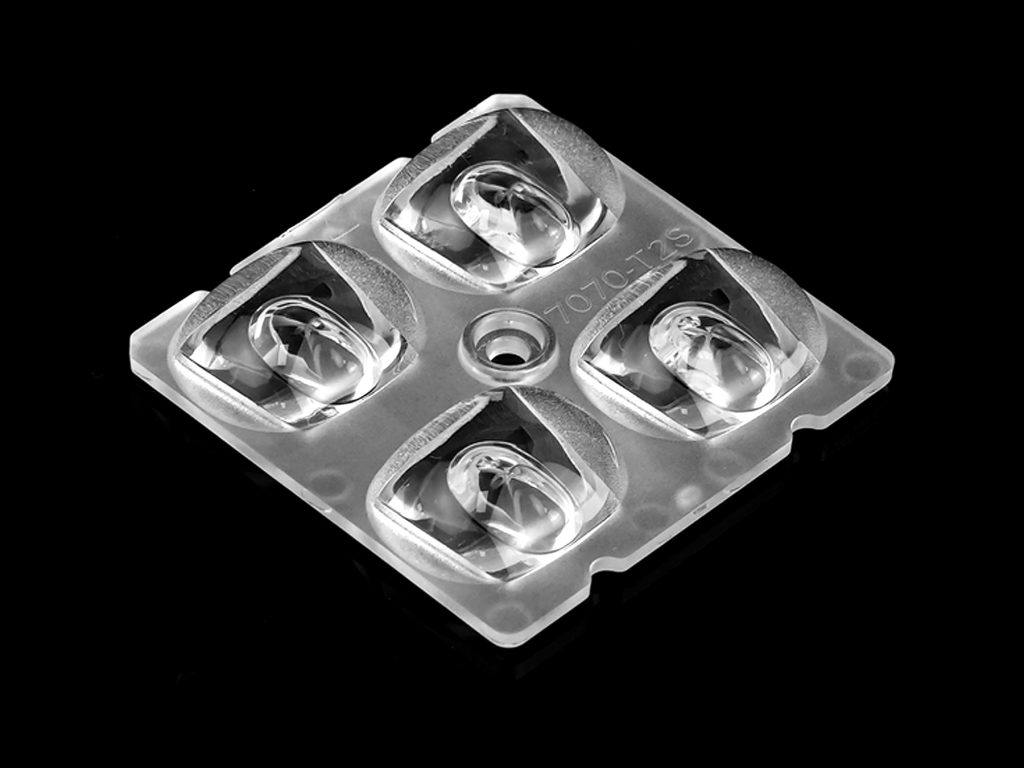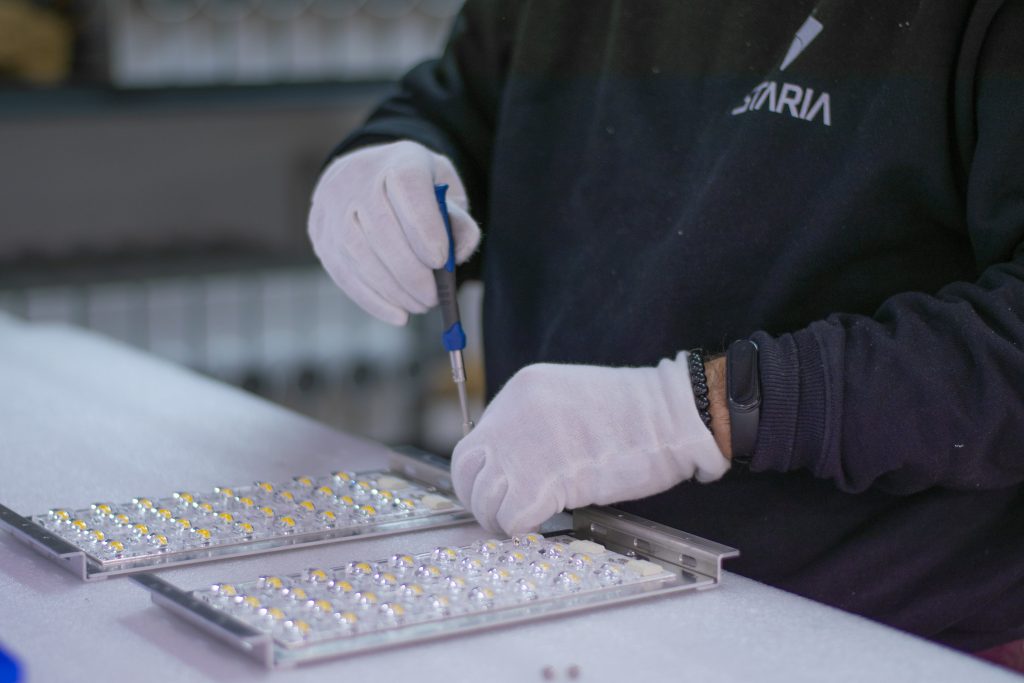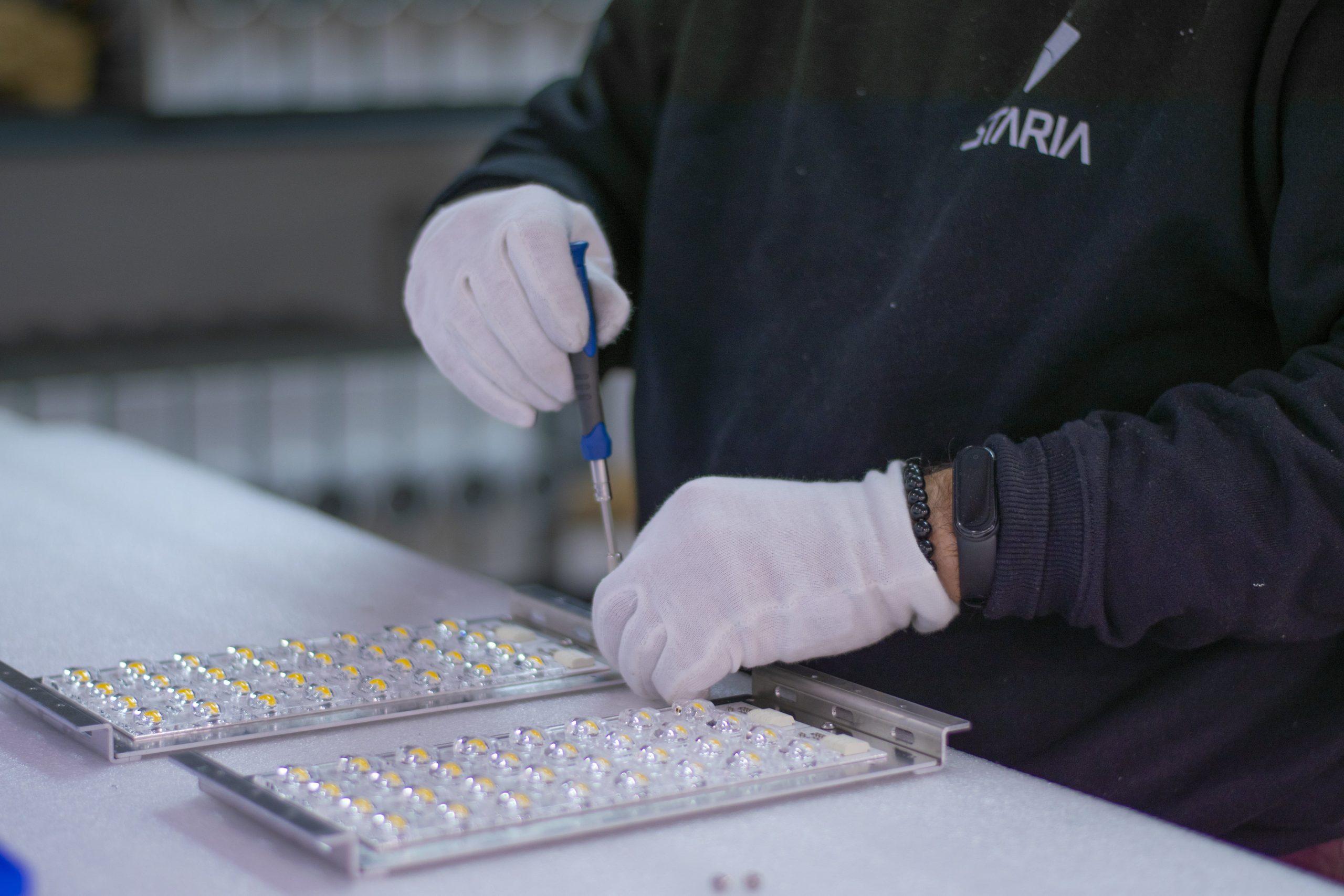June, 2024
LED lenses are a component of luminaires that is usually overlooked. However, they are of great importance for the correct illumination and operation of a streetlight.
Below we explain their function and the different types.
Introduction
Light-emitting diodes (LEDs) are semiconductors that emit light when an electric current passes through them. LEDs are increasingly replacing traditional light sources in a variety of applications. A well-designed LED optical system requires lenses with the right characteristics to scatter, collimate or converge light. There are different types of LED lenses for different applications. In this article we will discuss the different types of LED lenses and their applications.

Types of LED Lenses
LED lenses are small transparent covers that are placed over an LED light source. They serve several important functions.
They help diffuse the light, making it more uniform and easier to see. They also protect the LED from dust, dirt and other environmental hazards. Finally, they can be used to change the color of the light.
LED lenses come in a variety of shapes and sizes, perfect for any application.
The most commonly used types are explained below:
Colinar Lenses
Colinares lenses are designed to align and focus the light beams from different LED sources into a single beam. These lenses increase light intensity while minimizing sidelobes intensity. Colinear lenses are compact and can be easily integrated into various applications.
Fresnel Lenses
Fresnel lenses are thin, lightweight lenses used to increase the intensity of light from an LED source. The design of these lenses produces a series of concentric rings on the instrumented surface, which help to collimate the light. Fresnel lenses are commonly used in optical lighting applications where high intensity and uniformity of light is required.
Frosted Lenses
Frosted lenses are lenses with a rough or textured surface, which diffuses light for a more even distribution. The frosted surface of these lenses scatters light in all directions, reducing glare and producing a soft, diffused light effect. Frosted lenses are often used in architectural lighting applications, such as wall washers and coves, because of the uniform light distribution they provide.
Fisheye Lenses
Fisheye lenses are used to create a wide-angle view of an LED source, such as in an outdoor lighting application. These lenses have a special curved design that allows light to be projected in all directions, creating a hemispherical cone of light. Fisheye lenses are primarily used in outdoor lighting applications to illuminate larger areas with a single LED source.
Spherical Lenses
Spherical lenses are designed to create a uniform distribution of intensity and brightness over a given area. These lenses have a non-spherical shape that corrects the aberrations produced by spherical lenses. Aspheric lenses are commonly used in street lighting applications where uniformity and glare control are very important.
Diffraction Lenses
Diffraction lenses are used to diffract light, producing a complex pattern of light with various color bands. These lenses are commonly used in special effects and art installations to create a visually interesting light effect. Diffraction lenses can also be used in optical lighting applications, where complex light patterns can be used to create a unique atmosphere and draw attention to a specific area.
Use of LED Lenses in Solar Streetlights
LED lenses are an essential component of solar luminaires, as they help direct and control the light emitted.
The type of lens used depends on the application, with different lenses required for roads, paths and outdoor areas. In Staria, we always use the best lens for each job, ensuring minimum light pollution and maximum efficiency.
This not only benefits the environment, but also results in better quality and longer lasting lighting. By choosing the best LED lenses, we can help create more sustainable and cost-effective solutions for outdoor lighting.

Conclusion
LED lenses are an important component of any LED optical system. Different types of lenses are available for different applications, from collinear lenses for aligning and focusing light beams to diffraction lenses for creating visually interesting light patterns. When selecting LED lenses, it is important to consider the specific requirements of the application and the desired lighting effect.

